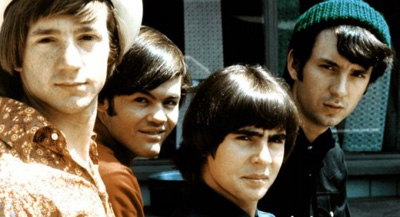|
|
Chapter Two: HeadBy Brett Ballard-BeachMay 24, 2012
Mature, a star of the 1940s and 1950s in just about every genre under the sun (the same ones Head mocks on a continual basis) had mostly retired by 1968 but returned on a limited basis to play himself as needed. His character in Head is billed as “The Big Victor” and he appears to be modeled on a slightly less benevolent Jolly Green Giant. He emerges time and again to rain down the fury of a god on the hapless quartet. In the most memorable sustained non sequitur in the film, Mike, Davy, Micky and Peter find themselves stranded in the dark in the middle of a dandruff commercial only to be vacuumed off of Mature’s head and wind up inside a life-sized vacuum cleaner bag. There is a fair amount of wit about the whole progression, lacking the heavy-handedness that tips the scale at other moments. It feels like it could have been a sequence on the television show. By the film’s end, the plot has reached a “this is where we came in” moment reminiscent of old serials where the entire band takes the plunge after disrupting the bridge dedication, and the resulting idyll, scored to a reprise of “Porpoise Song” is soaring until… well, if you’re expecting that some kind of happy ending will be obtained after all that has come before, you may want to stick with the television episodes. One of the earliest critiques of Head that I recall coming across was in a review guide to music video compilations and other rock-music themed movies and concert films. The author posited a scenario in which a Monkees fan in late ‘68 caught the film and then (paraphrasing here) shuffled off quietly out of the theater, thinking silently to himself or herself “What the hell was that?” A lot of the film’s significance now rests in its status as a cultural artifact, a time capsule of a very particular moment in American history, and in the life cycle of a pop culture phenomenon. The music still holds up, and The Monkees in one form or another rode waves of nostalgic revivals that allowed them to keep touring over the decades. In a recent interview Nesmith indicated that he viewed Head as a necessary step in the evolution of the band and that, as unpleasant as the experience was, he would make the same decision to do the film again. Unwitting or not on his part, that comment is perhaps the most fitting and succinct analysis of what Head is all about. Next time: We jump from the ‘60s to the ‘80s, and a cult musical documentary about the underground metal scene.
|

|
|
|

|
Friday, November 1, 2024
© 2024 Box Office Prophets, a division of One Of Us, Inc.


